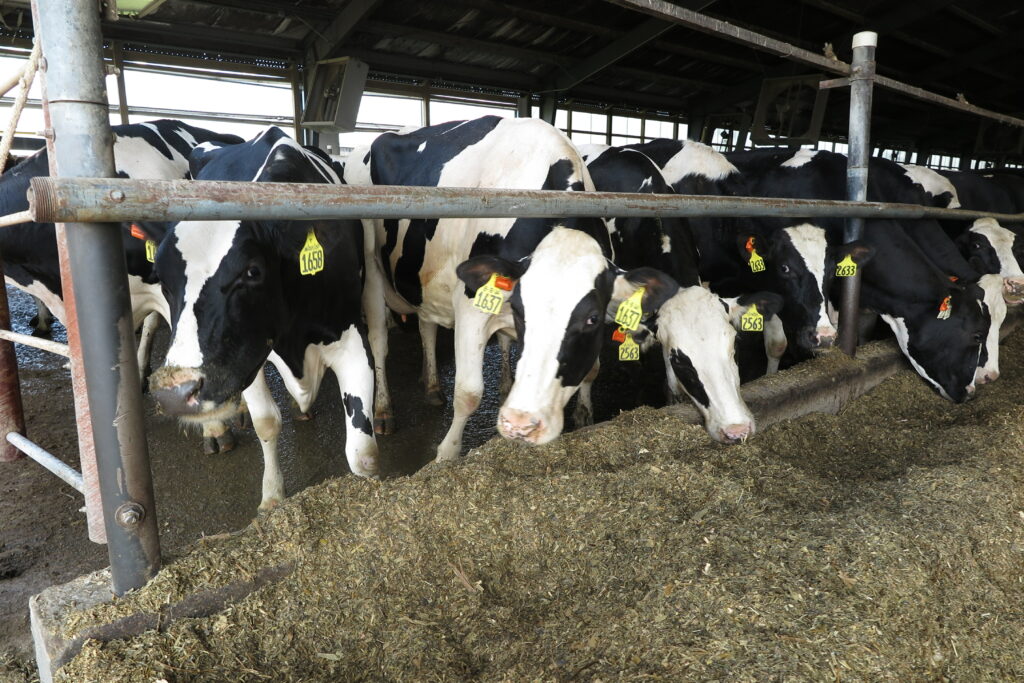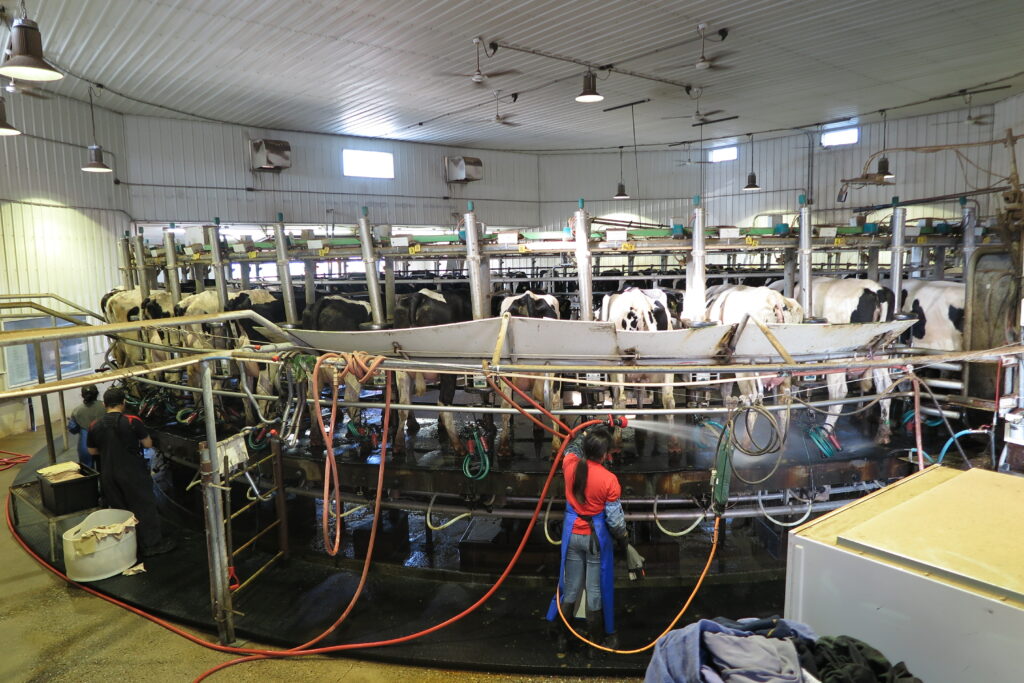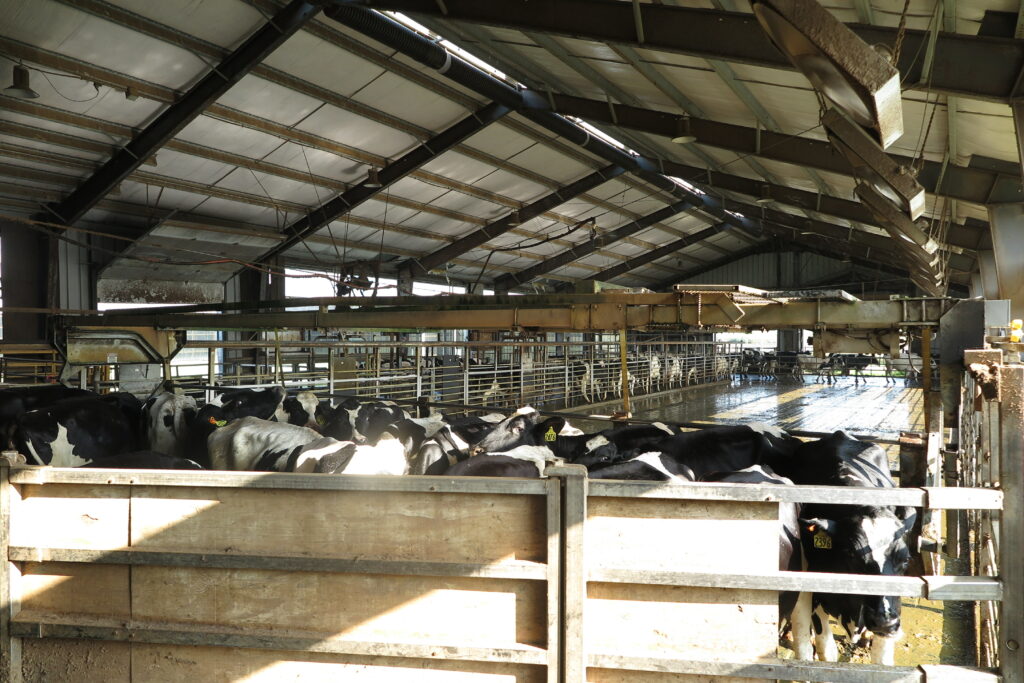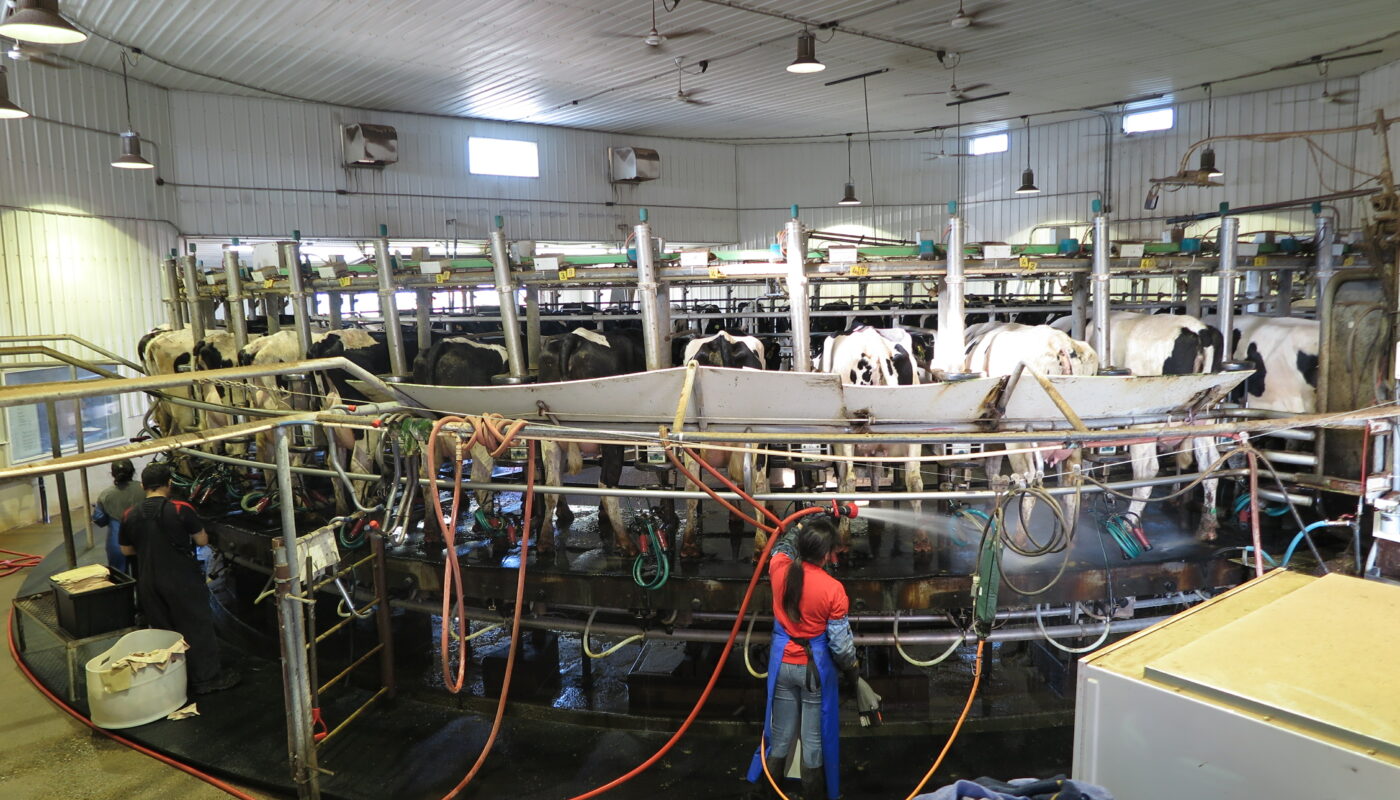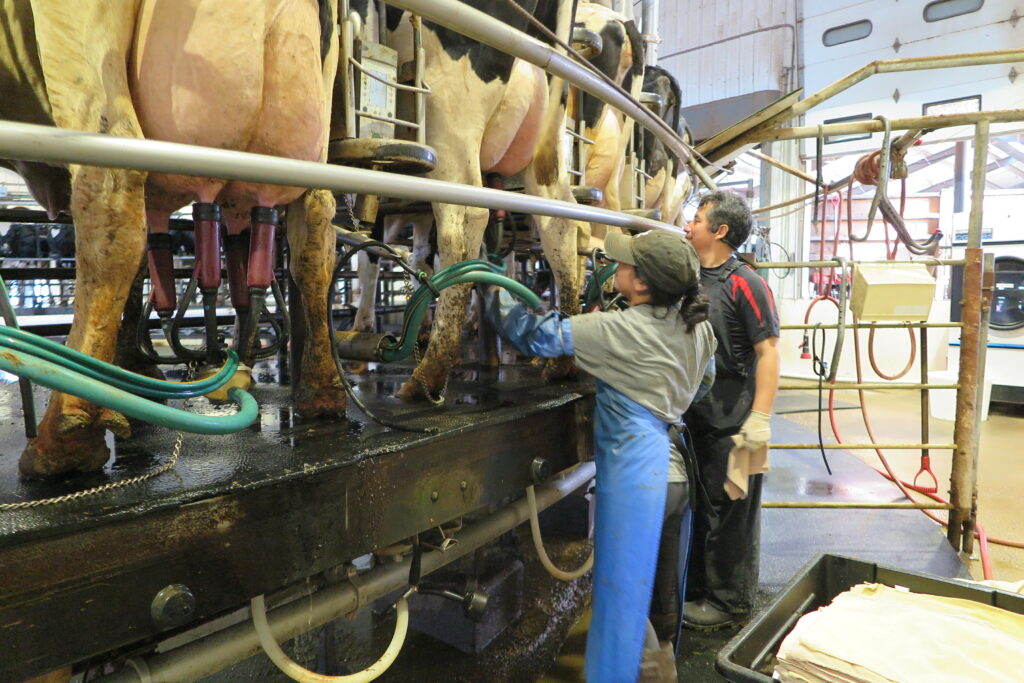
WINONA, MN. — Corn drapes every curve and rise here in Winona County, Minnesota – seemingly endless fields of grain that contribute to the food, fuel and finances of a robust US agricultural economy.
But the bucolic landscape belies a dark and dangerous truth: Much of the groundwater in the porous limestone beneath Winona County is contaminated with some of the nation’s highest levels of nitrates — harmful pollutants released into the environment by the use of nitrogen chemicals and livestock manure as fertilizer on farmland.
Close to 200 wells in the county have been contaminated with nitrates at levels higher than what federal officials consider safe, according to state officials. It’s frightening data for area residents because nitrates are linked to a range of health problems, including heart and lung problems and certain cancers. Nitrates are known to be particularly dangerous for babies.
Crop and livestock production accounts for roughly 70 percent of the state’s nitrate pollution, according to the Minnesota Pollution Control Agency, a fact that led a coalition of 11 state and national environmental groups this spring to petition federal regulators to investigate.
The groups are calling on the Environmental Protection Agency (EPA) to protect residents of Winona and seven other southeast Minnesota counties from “imminent and substantial endangerment†caused by nitrate contamination. The agency’s regional office has begun to interview state officials.
The issue is not unique to Minnesota. State and federal data show that since 1990, nitrogen spread on fields in ten major US corn-growing states has increased 26 percent, with more nitrogen than ever pouring off the land and into US waters
Prioritizing Profits
There are many well-known factors driving the contamination, which has been ongoing for years: High corn prices encourage excessive fertilizing. Large livestock and poultry operations spread billions of gallons of nitrogen-rich liquid and millions of tons of solid manure on farmland. And, because maturing corn plants absorb only a finite amount of nitrogen, as much as half to 70 percent of the fertilizer does not get used by the growing plants and drains off of fields into waterways instead.
There’s another, less-known factor at play, however: Taxpayer-funded, public agricultural universities are helping drive the overuse of fertilizer, and the resulting contamination. The role they play is buried deep in agriculture policy and contemporary practice and works in the form of “formal fertilizer recommendationsâ€.
Developed in the early 1970s by a federal scientist and later refined at the University of Minnesota and every other Corn Belt agricultural university, the recommendations lay out for farmers how many pounds of nitrogen they should spread on their field to achieve high crop yields that maximize returns. Environmental impacts are not the priority. Profits are.
Farmers here and across the Corn Belt cite the recommendations as the scientifically sound basis for their fertilizing practices. But in interviews, prominent agronomists assert that far from being based on careful science, the recommendations are more like a big sports gambling wager — a convergence of field trial research, anticipated market prices for corn and fertilizer, soil testing, assumptions about weather, and the farmer’s own comfort with risk. There is little to no concern given to the fact that nutrients are running off the land and contaminating water.
“A producer who is risk-averse and cannot tolerate risk associated with less than maximum yields may want to use the N (nitrogen) rates near the high end of the acceptable range,” the University of Minnesota recommends.
The consequence, say leading agronomists, is that formal fertilizer recommendations promote applying 50 percent or more nitrogen than needed to raise abundant crops.
“A sizable percentage of nitrogen fertilizer is applied months ahead of when the corn actually goes into the ground. It gives it a lot of opportunity to go somewhere else,” said Matt Liebman, professor emeritus of agronomy at Iowa State University (ISU).
“If it’s going somewhere else, you might as well put on more. It’s relatively cheap in comparison to the value of the crop. So there’s a lot of that going on where people are looking at the recommendations, which are based on one set of precepts, versus the reality that there’s all this uncertainty and farmers just go get it done and have enough there,” said Liebman.
Research shows the average rate of fertilizer nitrogen application could be cut about 35 percent with no impact on corn yield, according to Liebman.
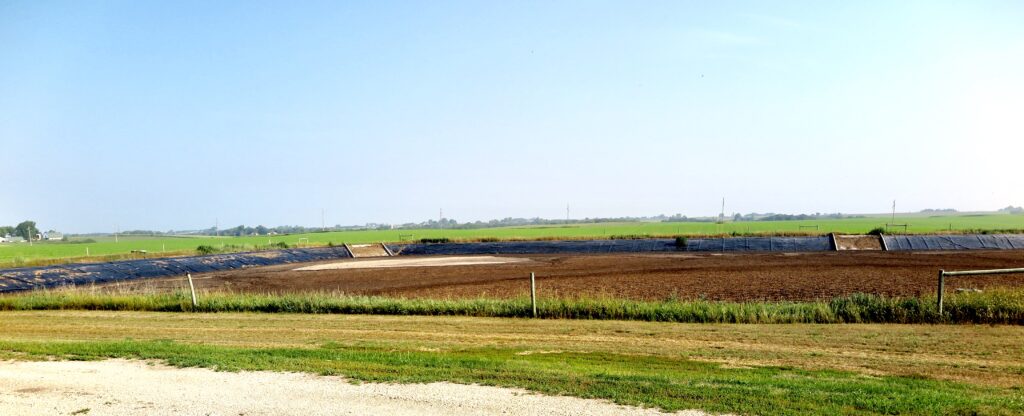
Drenching The Soil
The nutrient recommendations generate a $27 billion-a-year source of revenue for the US fertilizer industry. They sanction soil-drenching manure spreading that helped livestock agriculture develop into immense hog, dairy, cattle, and poultry operations feeding thousands of animals.
They also have produced a kind of research schizophrenia in agricultural universities. In Minnesota, for instance, the university recommends as much as 255 pounds of nitrogen per acre for 200 bushel-per-acre yields when farmers plant corn two or more years in a row. ISU recommends as much as 240 pounds per acre for comparable yields.
Yet in field trials by different teams of agronomists at Iowa State University, and duplicated at other land grant universities, researchers found that nitrogen applied at rates of 120 pounds per acre yielded crops of nearly 200 bushels per acre. Adding more nitrogen had almost no effect on yield. Applying 240 pounds of nitrogen per acre, one of the university recommendations, added costs but did not increase the harvest.
The University of Minnesota participated with other agricultural universities in a well-regarded review of fertilizer recommendations in 2006 that made the same point. “When too much nitrogen is applied, corn yield and quality are generally not decreased, but profit is reduced and negative environmental consequences are likely to occur,” Gyles Randall, professor emeritus of soils science at the University of Minnesota, wrote in the review.
Moreover, farmers are inclined to heap nitrogen on their fields as insurance in case it rains and washes some nitrogen away. Despite high prices of late, it’s still pretty cheap. As a percentage of the roughly $520 per-acre cost of raising corn, according to an ISU study, nitrogen’s share is $155, or $31 an acre more than cost of corn seeds.
“When corn prices are high, that’s incentive to use a little extra,” said Emerson Nafziger, professor emeritus of agronomy at the University of Illinois. “The downside of that a lot of times is it’s going to be too much. Where does that excess nitrogen go? Much of it leaves the field.”
Starting in the mid-1960s, as agriculture was starting to become more specialized and big fields of corn – the most heavily fertilized crop – began to replace small diverse crop and livestock farms, university agronomists pursued field trials to understand how much nitrogen corn actually needs.
In two especially influential studies, the first in 1966 and the second in 1973, a federal scientist named George Stanford recommended that farmers apply 1.2 pounds of nitrogen for every bushel of corn they wanted to harvest. Stanford’s 1.2 rule of thumb, as it came to be known, helped generate higher corn yields. But it also produced the first tides of nitrate water contamination across the Corn Belt. And it’s only growing worse.
In Iowa, as much as 1 billion pounds of nitrogen from fertilizer and manure combine with oxygen to form nitrates that drain off of farmland and into the Mississippi River annually, according to the University of Iowa’s IIHR Hydroscience and Engineering unit. An immense “dead zone”of oxygen-depleted water void of fish has developed where the river meets the Gulf of Mexico.
In Kansas, 6,300 square miles of groundwater, 8% of the state’s total, are contaminated with high levels of nitrates, according to the US Environmental Protection Agency. Nebraska is worse; more than 13,000 square miles of aquifers used by 360,000 residents for drinking water, are polluted with high nitrate levels.
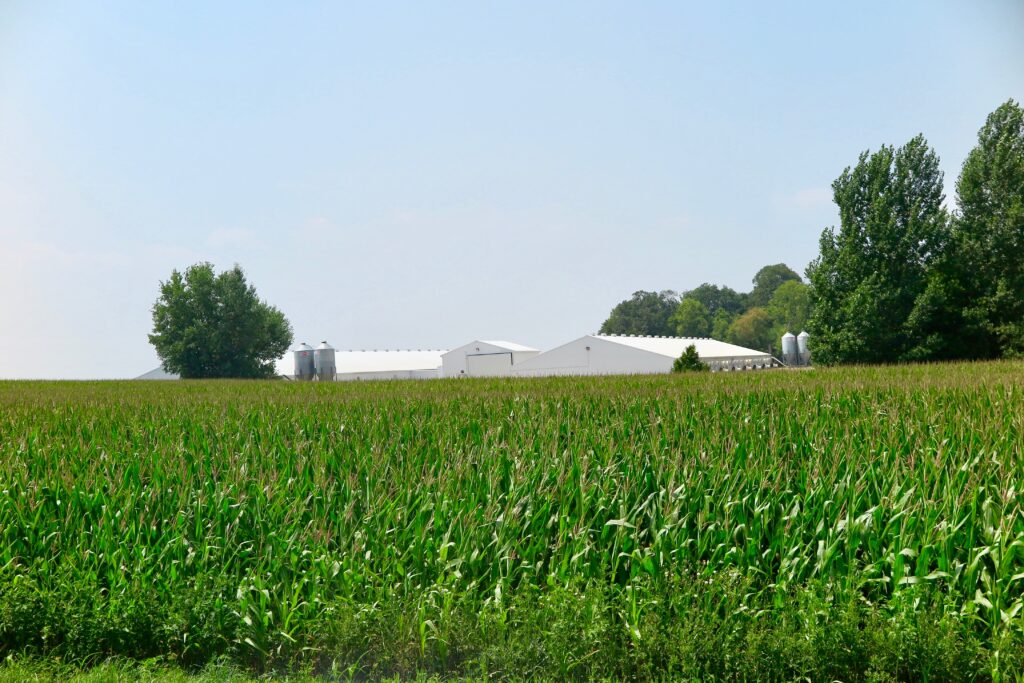
hog confinement feeding operation in Dodge County. (Photo/Keith Schneider)
Dispute Over A Dairy
Public restiveness about the contamination is now pitching farmers and communities in the Midwest and Great Lakes states into intense confrontations over fertilizer practices and pollution.
One of the fiercest disputes is focused on the expansion efforts of a large dairy operation in Winona called Daley Farms. The Daley family insists they need to triple the size of their current herd of 1,426 dairy cows in order to compete in the industry, and to enable a new generation to join in the ownership and management of the 160-year-old farm.
In 1998, facing a triple threat to its well-being — rising levels of nitrates in surface and groundwater, manure from increasing numbers of large livestock operations, and weak or non-existing state and federal regulations — Winona county developed and passed a local ordinance to limit the size of large dairies to 1,070 cows and thus control nitrate runoff from manure. Daley Farms’ existing herd is a grandfathered exception.
Further growth is not an option county officials are willing to allow. In Utica Township, where Daley Farms is located, 46.5 percent of the private wells initially tested by the state had nitrate rates above the 10 parts per million safety limit. In nearby Freemont Township, south of the farm, 54.8 percent of private wells tested above the safety level. In parts of Winona County half of all households have nitrate-contaminated drinking water
The family has sued to reverse the county’s rejection, and a court battle is ongoing.
The unfolding drama over the farm’s desire to grow and the public efforts to limit environmental contamination is a microcosm of the intensifying civic struggle to limit farm nutrient contamination across the ten Corn Belt states. And it is testing the authority of local governments to bypass weak state and federal rules to establish their own enforceable regulations to protect water quality, and question university-sanctioned fertilizer practices.

Ben Daley, one of the farm’s senior owners and managers, asserts his farm is not contaminating water. “We incorporate manure in the field as it’s being applied,”he says. “We use cover crops to hold that nitrogen in the soil so it doesn’t go down in the groundwater. We also have 300 acres of pasture.”
The dairy produces about 15 million gallons of nitrogen-rich liquid manure annually, and then applies the manure at a rate of 190 pounds of nitrogen per acre on corn fields. “That’s the university recommendation,” Daley said.
Winona County officials did not respond to requests for an interview. In court filings and in news reports, elected leaders said they had the authority to restrict the size of livestock operations to limit water pollution. Daley’s argument that it has an economic need to expand does not qualify as justification for a variance to the ordinance, Jason Gilman, the county’s planning and environmental services director, told the Winona Post in 2021. “It has to be some kind of physical limitation of the landscape.”
The confrontation between Daley Farms and the county underscores the hazards of fertilizer recommendations and so many other voluntary farm practices not only to residents but also to farmers. There are no regulatory constraints on how much commercial fertilizer crop farmers can use. And weak rules apply to managing manure. Thus, decades of discretionary, unenforceable, and limp oversight of fertilizer and manure have produced a water quality mess in the middle of the country.
Daley Farms is now snared in a conflict of credibility even though a morning tour makes perfectly clear that Ben and his family are experts in the careful choreography of tillage, crop and milk production.
With its 35 workers and all manner of production equipment, Daley Farms feeds its cows with farm-grown grain. Three times a day they are herded onto a rotating machine to be milked. The farm recycles much of the water and sand bedding used to care for the herd, and collects and stores rainwater that drains from its tarp-covered feed piles.
“For the last eight years people who have never met me or been on our farm have said pollution, pollution, pollution. Pollution coming from this farm,” Daley said. “We’re doing all these things. They’ve never seen them because they’ve never been on our farm. But they know everything about it because in their minds if you’re big, it’s bad.”
Minnesota’s rules for managing big livestock operations do not require water monitoring. A visitor suggests that despite its apparently excellent stewardship, Daley Farms cannot prove to the county that its nitrogen does not reach groundwater reserves. That requires drilling monitoring wells and frequent sampling for nitrate levels.
When asked if the farm would consider installing wells as part of its farm operation Ben Daley did not hesitate. “Yeah, why wouldn’t I if I have to,” he said. “Yeah, absolutely.”
— Keith Schneider
This article, the latest in our Toxic Terrain, is supported by fellowships awarded by the Alicia Patterson Foundation and the Fund For Investigative Journalism.
